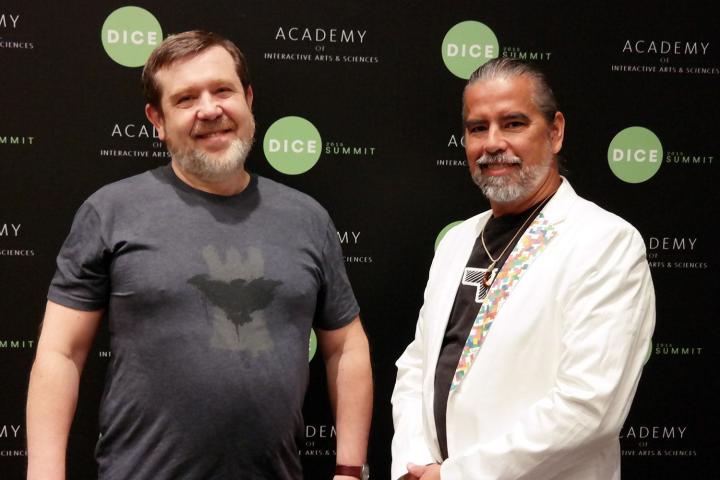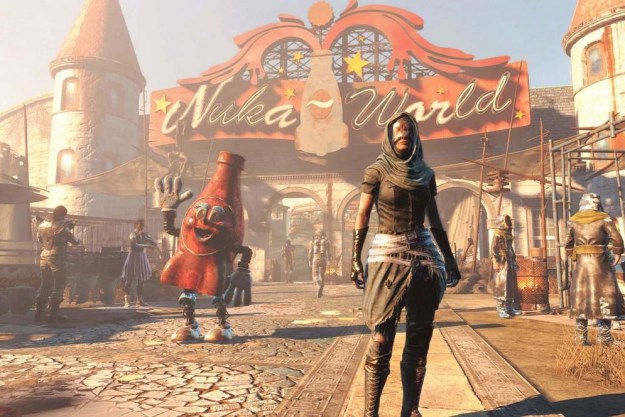
“If the screen has got enough dots to display it, Tetris will be on it.”
No one knows that better than Henk Rogers, co-founder of The Tetris Company and the guy who said it. Alexey Pajitnov built the heart of the enduringly popular puzzle game, but it was his collaboration with Rogers that architected its future. In a world where true perfection is a myth, the relatively unchanged 30-year-old juggernaut that is Tetris hews perilously close.
“The very first prototype, I did it in maybe two weeks,” Pajitnov tells Digital Trends. “But then, when it started breathing on the screen, without score [or] any decoration, I couldn’t stop playing even if it was just core mechanics. So it took me a long time to get myself out of playing and put [in more] stuff. So basically, all together, I think it was ready in five, six weeks.”
Take a moment to let the scale of that sink in. Tetris has been around for more than three decades, and virtually nothing in its fundamental design has changed. For any adornments that have been added, the basic concept of linking together four-piece blocks of different shapes as they drop into a well remains unchanged to this day. Can you think of any other video game that can make the same claim?
“If you look at all the top players, they’re all playing the same way.”
Pajitnov, a fan of puzzles since childhood, drew inspiration for his game from the pentomino toys he played with when he was younger. Those puzzles involved filling in an empty field by arranging a series of five-piece, differently shaped blocks in a specific way. Tetris twists that idea in the way that it removes one or more lines — as many as four at once, called a “Tetris” — as players complete them.
“The universe is about entropy. If you just let the pieces fall, it’s entropy; they just float away,” Rogers explains. “But in fact, what Tetris does is, you are creating order out of chaos. That is kind of our basic function as an organism, to take random molecules or proteins and build them into complex chains.”
Pajitnov concurs, emitting a deep, baritone chuckle before he speaks in thickly accented English. “We’re working against entropy, that’s true.”
Rogers again: “So that’s Tetris.”
The two men met and bonded when Rogers made his first trip to Russia, then the Soviet Union, in a bid to secure rights to the game for Nintendo. That story is the stuff of video-game legend, carefully chronicled in this wonderful BBC documentary. In short: Multiple parties were vying for the rights to the game at a time when the capitalist idea of intellectual property was a foreign concept in the USSR.

Rogers won his bid, stealing it away from Nintendo competitor Atari. That singular moment set Tetris on a course to all its future successes, starting with the game’s debut as a launch title and pack-in release for Nintendo’s first handheld system, the GameBoy. But peripheral to all of that negotiating was a very real connection between two men who would become fast friends.
“If Alexey had been some kind government official, then there wouldn’t have been that core of ‘Let’s be friends and do this business together,’” Rogers tells us. “Our friendship, which culminated in a handshake on how to do the business for the rest of time, really is much stronger than any contract or player that existed at the time. And it transcended the political systems that we lived in and the games… everything! It was just, OK, let’s do this thing. And we’ve been doing it ever since.”
Pajitnov built the core of Tetris and its falling blocks on his old Electronika 60 computer, an early PDP clone. That initial build was essentially a prototype, with “graphics” made up of keyboard characters due to the early computer’s text-only display. Rogers later helped his friend and partner better define what we now know as Tetris.
The origin of Tetris’ T-Spin
In Tetris, the T-Spin involves rotating a piece just before it settles, allowing players to squeeze into a tight space. It turns out that the move’s formal integration into the game came from an unlikely source: Killer Instinct creator Ken Lobb.
Rogers ran into the veteran designer during CES, and Lobb excitedly showed off his fancy moves. “He created a situation where the block would come down and he managed to … flip it in place. He was so proud when he did it,” Rogers says.
He quickly realized that players should be rewarded for employing that strategy. “Whenever somebody feels like they’re accomplishing something in a game, give them points. So we watch very carefully to see what those things are, and then we add it to the game.”
Rogers continues: “We overvalue them for awhile, so you get extra points. Meaning the game is a little unbalanced until everybody is doing T-spins. And then we bring the T-spins to the same level as the single/double/triple/Tetris [bonuses].”
“Originally, you start and the level is very slow. So you work your way up to the level that’s interesting,” Rogers says. “It’s sort of like being in a race and, for the first five minutes, you have to drive at 10 mph, and for the second part you have to drive at 20 mph. Finally you get up to the speed where you’re like, ‘Oh yeah, now I’m having fun.’”That slowly escalating pace was a very conscious decision on Pajitnov’s part. “I was very concerned with the levels, how you change them. So my main challenge was to have this learning process [last] as long as possible,” he explains. “So keep people inside the game as much as possible. That was my original goal or purpose or whatever.”
Both men were in agreement about giving players an opportunity to learn the ropes, but Rogers saw an opportunity to build in hooks. “I wanted to … give people something to do in those early levels besides just wait around, because it felt like work,” he says. “So single/double/triple/Tetris [bonuses] were actually giving people something to do during the early levels. Then I broke it up into levels so it stopped and you could see your score at the end of each level.”
These scripted stopping points gave players a moment to catch their breath, but also trained them to understand how scoring works. Tetris is a game that demands concentration even on its easier levels, and there’s really no value in keeping one eye on the score. It’s one example of the game’s many tiny evolutions over the years.
“Ten years into it, we kind of noticed that the gameplay, if you look at all the top players, they’re all playing the same way,” Rogers says, referring to another of Tetris‘ formative moments. “It reaches that point where everybody creates this little pipe on the side and they build up and they drop [the I-Block in]. So then the game started having a pattern that seemed too obvious, too clear.”
Tetris is the product of pure chaos, its falling blocks a completely unpredictable variable. Familiar patterns equate to death. Pajitnov and Rogers understand that the game’s power lies in the randomness at its heart. It’s when regular play patterns become apparent that the tiny evolutions occur.
“When you think about it, it’s OK for small children to watch … the same TV show over and over again. From that one little sequence, they’re gathering a lot. But when we’re adults, if we see the same … audio-visual sequence, we change the channel,” Rogers says.
“So Tetris doesn’t give you that same audio-visual. It doesn’t repeat. The pieces come up randomly and you’re always in a different situation. You always have to make a decision. You’re never playing Tetris by memory. That’s the pleasure center, I think. You get to make these little micro decisions about what you’re gonna do with that next piece.”

The Tetris of 2015 is as well-defined as it’s ever been, the product of many additive ideas. Though even taken all together, those changes don’t disrupt the fundamental experience that Pajitnov assembled in the ’80s. All of which is enough to make even a longtime fan wonder: Where can Tetris possibly go from here?
“If you look at early tennis … it’s cute. It’s a lawn game. And now it’s this thing with billions of dollars in sponsorships behind it,” Rogers says. “What made it go from a lawn game to a sport? [It] lasted long enough to develop into that sport.
“Tetris has shown that staying power. It’s been 30 years now that it’s been around, and it’s selling as much today as it ever did. There are very few other games — maybe there are no other games — that have that particular staying power. So I think that we have a very real chance of being the first real virtual sport.”
Any concrete plans for Tetris to be realized as a virtual sport are in the hands of Rogers’ daughter, who took control of The Tetris Company in December 2013. The ever-growing world of eSports certainly has an audience that would accommodate the classic, skill-based puzzle game. But that’s just one piece, one possible direction.
“Now we have virtual reality coming and we need to address this issue,” Pajitnov says. “It’s a new platform, and we need to adjust to this platform as well.”
It goes back to what Rogers said at the start of our chat: New displays means new avenues for Tetris to grow. “If it has a monitor and an I/O, then Tetris belongs on it.”







